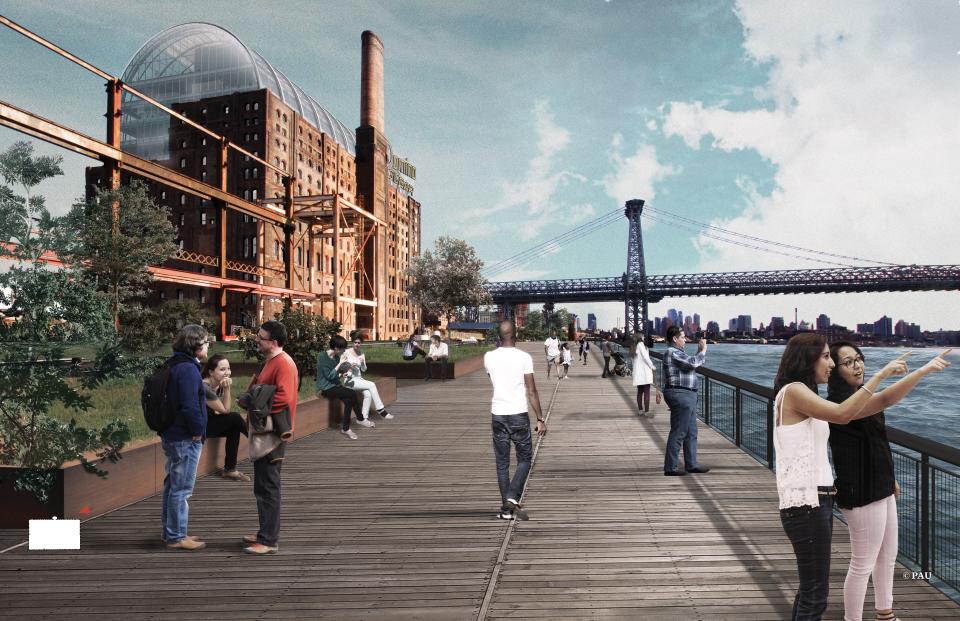Vishaan Chakrabarti Sees the Future in Old Cities
This is the latest in a series of profiles of immigrants who have made important contributions to the fields of architecture and design.
Vishaan Chakrabarti is one of the world’s most imaginative thinkers on how architecture can be used to improve cities. The founder of the New York firm Practice for Architecture and Urbanism (PAU), he became known in 2016 for a plan to recycle the shell of Madison Square Garden into a new train hall for Pennsylvania Station, which sits below it. The idea was to create something as dramatic as the McKim, Mead & White building torn down in the 1960s, using the Garden’s existing cylindrical structure. The New York Times, in an editorial, called Chakrabarti’s proposal “heartening,” “thrilling,” and “vastly better than anything that came before it.”
In 2017, he proposed a similarly ingenious plan for turning the Domino Sugar Factory on Brooklyn's waterfront, a decommissioned landmark, into a viable commercial building. The plan calls for creating a new glass structure (with a distinctive barrel-vaulted top) that sits within but never touches the existing masonry walls. Justin Davidson, writing in New York magazine, praised Chakrabarti for the “almost Poirot-like elegance with which [he] moves from apparently intractable problem to apparently inevitable solution.” Unlike architects who like building on blank slates, Chakrabarti says he’s much more interested in urban sites, where history informs design decisions.

Born in Calcutta, India, Chakrabarti emigrated to the United States as a toddler with his sister and parents. The family found its way to a Boston suburb, which Chakrabarti says he detested as “a bastion of violent racism.” At Cornell, he majored in art history and engineering—two subjects that regularly enrich his architecture. He obtained master's degrees in city planning at MIT and architecture at the University of California, Berkeley.
For three years after 9/11, Chakrabarti ran the Manhattan Office of City Planning, where he helped bring the High Line, the restoration of the street grid at the World Trade Center site, and Columbia University’s Manhattanville expansion to fruition. Prior to forming PAU, Chakrabarti led architecture and urban design projects as a Partner at SHoP Architects and an Associate Partner at Skidmore, Owings & Merrill. A Professor of Practice at Columbia University’s Graduate School of Architecture, Planning and Preservation, he is also the author of A Country of Cities: A Manifesto for an Urban America. (Metropolis Books, 2013)
At PAU, his projects include a 500,000-square-foot open-air bazaar and folk theater in Ulan Bator, Mongolia, a small cultural building in Harlem, affordable housing in East New York and Newark, a skyscraper in Philadelphia, and a master plan for a vast railyard in Queens.
Chakrabarti says that being “a dark-skinned immigrant in the architecture world” has downsides; he notes that the profession still suffers from a lack of racial diversity, especially among those in positions of authority. But what he calls his “hard-scrabble immigrant background” may give him an advantage when it comes to “reading culture,” a necessary step, he says, to making architecture that successfully serves communities.
More from AD PRO:Tour the 2018 Kips Bay Decorator Show House
Sign up for the AD PRO newsletter for all the design news you need to know


